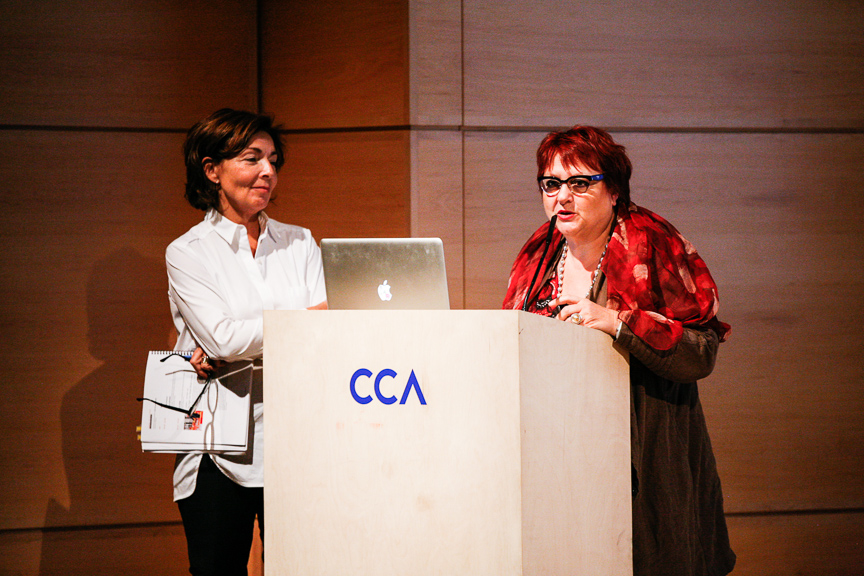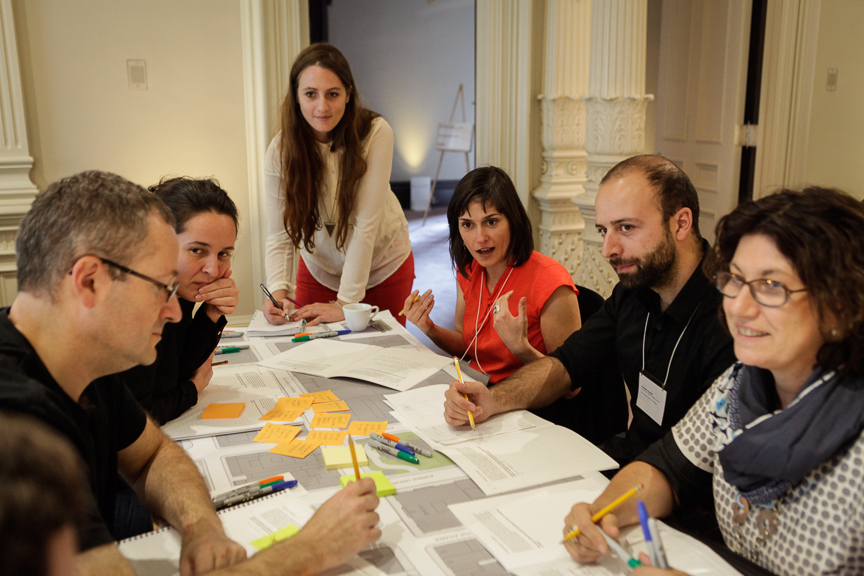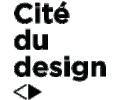Unsitely! – Leveraging Design to Improve Urban Construction Sites
Synthesis
Session 1a : Worksites and Culture / Design communication
Patrick MARMEN, Research Officer, UNESCO Chair on Landscape and Environment, Université de Montréal PDF
Session 1b : Worksites and Culture / Giving the worksite an artistic face
Clarence EPSTEIN, Director of Urban and Cutural Affairs at Concordia University PDF (French only)
Session 2 : Worksites and Society
Olivier PEYRICOT, designer, Director of the Cité du design de Saint-Etienne research centre PDF
Session 3 : Worksites and Innovation / Industrial design
Fabienne MÜNCH, Director, École de design industriel, Université de Montréal PDF
All sessions summarized in sketch notes
Drawings by Ross Atkin, Senior Research Associate
The Helen Hamlyn Centre for Design, Royal College of Art, London

Report
Nearly 300 people, including some twenty internationally renowned speakers from Asia, elsewhere in Canada, the United States and Europe, came here for the Unsitely! – Leveraging Design to Improve Urban Construction Sites colloquium, held as part of the 27th Entretiens Jacques Cartier on October 8 and 9, at the Canadian Centre for Architecture. The event, organized by the city of Montréal Bureau du design in co-operation with the Saint-Étienne Cité du design, is a first step toward developing new ways of doing things on Montréal worksites.
Montréal takes action
Montréal is drawing inspiration from the experiences of cities like Berlin, Lille, London, Nantes, New York, Paris, Saint-Étienne, Seoul, Toronto and Toulouse that have turned to calls for proposals, idea competitions and artwork projects to foster creativity, especially among the new generation of designers, and make the most of worksites’ innovative potential.
Following up on the colloquium, the city announced that it intends to launch a worksite design competition next spring for the repair work on rue Sainte-Catherine Ouest starting in 2016. “This project shows the city’s desire to integrate design into the planning, design and implementation of its urban worksites. The goal is to reduce nuisances for local residents and improve the city’s economy and drawing power,” explains Manon Gauthier, Montréal Executive Committee member responsible for culture, heritage, design, Space for Life and the status of women.
While worksites point to urban vitality and are unavoidable if a city is to maintain the quality of the living environment, each one is different, with a unique nature and function specific to a particular issue and context. This is the finding of the best practices surveyed around the world, illustrated by the many opportunities – as many as there are urban worksites! – for positive, community-rallying experiences.
Three approaches
In terms of communications, the focus for the examples described at the colloquium was on explaining the worksite – its history, the process, the people and the reasons behind the work, and the quality of the final product – to make it more meaningful. In this respect, the worksite reflects the original project. Clarity, coherency and simplicity are the keywords in designing communication tools, to help users understand how the worksite is designed and how they can adapt to it.
In social and human terms, university studies have found that carefully designed interventions around the perimeter of a worksite help to reduce stress and improve the health of passers-by in the long term. Many of the solutions presented have allowed neighbours to claim the site perimeter for their own, either by integrating architectural features or artwork, or redefining the space between neighbourhood life and the worksite so as to bring citizens together. Far from simply decorating the hoardings, the basic goal in this case is to pay particular attention to the individuals who have to “live with” the worksite.
In terms of innovation, the emphasis is on taking a new look at traditional structures, eliminating obstacles to change and convincing opponents of the merits of the design process. In New York, a wonderfully fertile environment for experimentation, a worksite practice quality checklist was drawn up for contractors, and design competitions organized for worksite shelters and sidewalks led to concrete results.
Some artists created and donated graphic art to add life to the Times Square worksite, while improvised public mini-squares were set up under the scaffolding and industrial designers developed prototypes for new and visually attractive construction hoardings.
The city of Montréal, a pioneer in this reflection process, has the chance to develop approaches that can set the standard and inspire other cities, with benefits for residents. Since sharing its experiences is a way of strengthening the bonds forged through this international symposium, videos of the speakers and summaries and of their talks are available on the event webpage.









